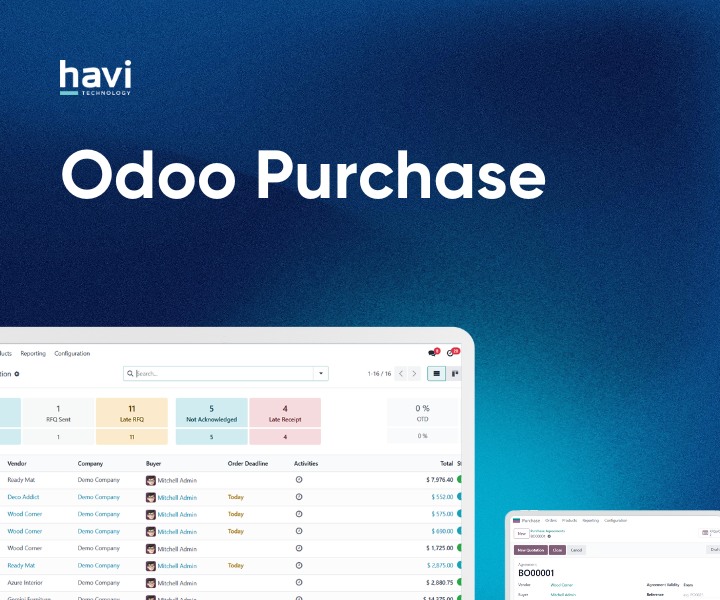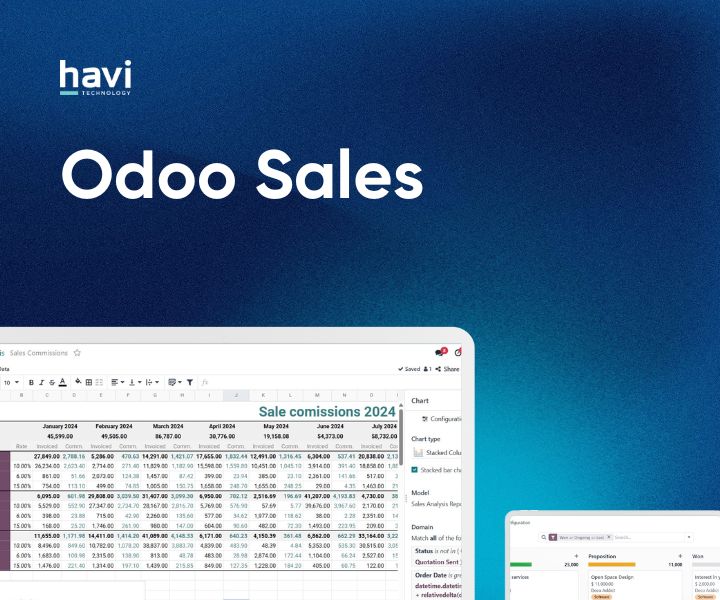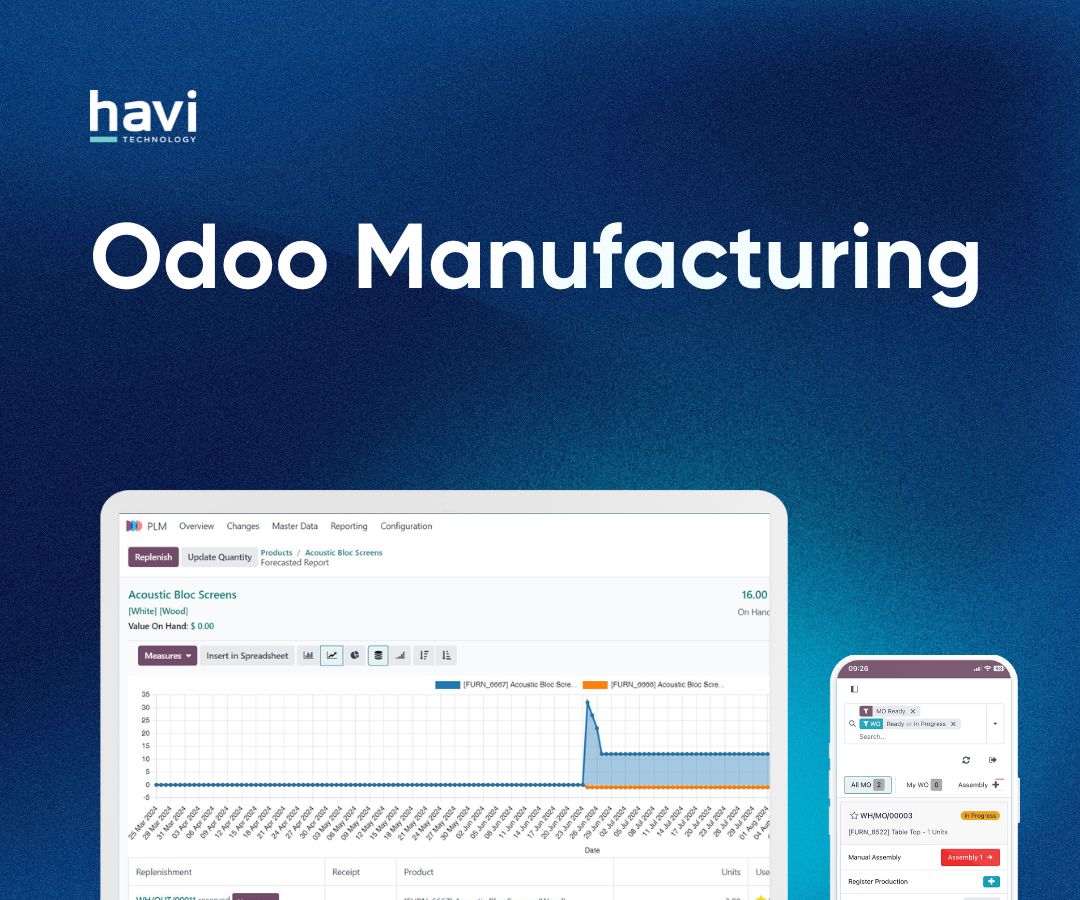TABLE OF CONTENTS
- 1. Website and Customer Experience
- 1.1. Website & eCommerce: Guided Onboarding, New Templates, Google Merchant Sync
- 1.2 Live Chat and Discuss: Expertise Routing, Chat Insights, Status Controls
- 2. Sales, CRM and Subscriptions
- 2.1 Sales: Editable Optional Products, Catalogue Sections, Portal Top-Up
- 2.2. CRM and Marketing: AI Probability, Lead Sources, Kanban Linking
- 2.3. Subscriptions: Prorated Billing, One-Time Sales, Portal Edits
- 3. Inventory, Purchase and Barcode
- 3.1. Inventory and Purchase: Packages within Packages, Forecasted Reports, Suggested Quantity to Replenish
- 3.2. Barcode: Operation Descriptions, Product Source Location, Lot and Serial Number Properties
- 4. Manufacturing, Shop Floor & Planning
- 4.1. MRP: Gantt View, Editable Deadlines, Labour-Based Valuation
- 4.2. Shop Floor & Planning: Barcode Workflows, Shift Scheduling, Routing Edits
- 5. Project, Timesheets and Services
- 5.1. Project and Timesheet: Smart Assign, Mobile Grid View, Priority Alerts
- 5.2. Field Service and Appointments: Calendar View, Technician Tracking, Mass Planning
- 6. HR, Payroll and Expenses
- 6.1. Payroll: Redesigned Engine, Payslip Correction, Unified Master Report
- 6.2. Time Off and Expenses: Odoo Master Cards, Multi-Expense Submission, Complex Duration
- 7. Accounting, Compliance and ESG
- 7.1. Accounting: Peppol Invoicing, Bank Sync, BAS Reports
- 7.2. ESG App: Scope 1–3 Emissions, CSRD Reporting, Auto Category Mapping
- 8. AI, Documents and Sign
- 8.1. AI App: Prompt Commands, Auto Field Completion, Voice and Web Search
- 8.2. Sign and Documents: Bulk Signing, Chatter Integration, Access Controls
- Odoo 19: What’s Coming For Australia?
- 1. Fully compliant Payroll AU with STP Phase 2 and SuperStream
- 2. ABA file payments, Direct Debit for wages/super
- 3. Multi-stream YTD import, backpay, and validations
- 4. 2025–26 tax rules, STSL changes, ATO security
- 5. Peppol invoicing, GST toggle, fringe benefits, BAS automation
- 6. Tyro integration
- 7. Roadmap: SBR BAS lodging, Open Banking, PEL Access, Fiduciary Program
- Odoo 19’s FAQs For Australian Teams
- 1. How should Australian businesses prepare?
- 2. How is Odoo 19 different from Odoo 18 in Australia?
- 3. How can AI in Odoo 19 be tailored for real business outcomes?
- 4. How can I try Odoo 19 or upgrade from my current version?





The Odoo Inventory module is a robust module within the Odoo suite, providing a complete software solution that integrates robust inventory and warehouse management features. It offers the flexibility and scalability businesses need to thrive in dynamic industries.
This guide explains the fundamentals of Odoo Inventory, its key features, and a real-world use case to see how it stacks up against the competition.
What Is The Odoo Inventory Management Module?
The Odoo Inventory module is an integrated solution designed to optimise stock control, automate logistics, and enhance supply chain efficiency. Unlike traditional inventory systems, Odoo Inventory leverages real-time data synchronisation, artificial intelligence (AI) for demand forecasting, and deep integration with IoT devices to streamline operations.
With features like automated stock replenishment, barcode scanning, and multi-warehouse support, this module empowers businesses to reduce manual effort and minimise errors.
1. What are the benefits of using the Odoo Inventory module?
The Odoo Inventory module enables users to track stock levels in real time, automate key tasks, and optimise warehouse operations, helping businesses scale efficiently while reducing costs.
Here are the advantages that make users choose it over other solutions:
To see how Odoo Inventory can transform warehouse management, watch the following video:
2. What are the hardware options for Odoo Inventory?
Odoo offers not only software but also smooth hardware integration to maximise your warehouse's productivity. Here are the essential hardware options:
To ensure smooth operation, verify that your selected hardware is compatible with your keyboard layout and regional settings. Odoo also advises testing individual devices before purchasing, as model variations may impact performance.
3. How much is the Odoo Inventory module?
The Odoo Inventory module is available for free in the Community version, though it has limited features. The Enterprise version starts at 34.4 AUD/month (or is free if only using one app). Keep in mind that barcode functionality is not included in the Community version.
The following image highlights that barcode features are not included in the Odoo Community version:
The following factors affect the cost of the Odoo Inventory module:
Odoo versions
Odoo Community: Free (with limited features)
Odoo Enterprise:
Software (Odoo Inventory app)
Hardware (Odoo Inventory)
Other flexible options
4. How To Set Up Your First Operation With Odoo Inventory?
To set up your first operation with Odoo Inventory, you need to define warehouse locations, configure stock rules, and enable tracking features to ensure seamless inventory management. Here are the key stages you should go through in the initial setup phase:
#1 The Basics of Inventory
#2 Replenishment Strategies
#3 Control & Traceability
#4 Transfers between Warehouses
For the most reliable guidance, follow Odoo’s official tutorials on Odoo Inventory, which provide step-by-step instructions tailored for businesses of all sizes.
With the right setup, Odoo Inventory simplifies stock tracking, warehouse automation, and supply chain visibility. However, the real power of Odoo Inventory lies in its key features, ranging from smart replenishment to multi-warehouse management.
What Are The Key Features Of Odoo Inventory?
With Odoo Inventory Management features, you can enhance stock control, optimise warehouse operations, and obtain real-time inventory-level insights.
Recently, Odoo 18, launched in 2024, introduced significant improvements to inventory and warehouse efficiency. Specifically, Odoo has enhanced stock flow management, improved push/pull rules, precise lot/serial number tracking, and an advanced dispatch management system. The new Multi-Scan and Barcode Lookup feature allows warehouse staff to scan multiple items simultaneously, increasing efficiency.
Now, let's take a closer look at its key features that can alleviate your typical inventory management pain points:
1. Smart Warehouse Operations
Smart Warehouse Operations in Odoo Inventory refers to an intelligent, automated approach to managing storage locations, stock movements, and warehouse workflows. By leveraging putaway rules, advanced storage strategies, and automated removal policies, businesses can improve space utilisation and reduce order processing times.
See the following screenshot for the dashboard of Odoo’s warehouse management system:
Here are the key solutions:
2. Pick, Pack, and Ship with Efficiency
Odoo simplifies the pick, pack, and ship process by automating order fulfillment workflows, reducing errors, and improving shipping accuracy. The system ensures smooth operations by optimising batch picking, barcode-based tracking, and real-time stock updates.
The image below illustrates the "Process a picking" function in Odoo Inventory:
Here are the key solutions:
3. Advanced Inventory Control
Advanced Inventory Control allows businesses to manage inventory across multiple warehouses, automate stock transfers, and track supply chain movements with precision. Custom fulfillment paths ensure efficient order handling while minimising logistics delays.
The screenshot below shows generated routes from the Odoo inventory management system:
Here are the key solutions:
Monitor the subcontracting processes, which involve generating delivery records and performing quality inspections.
4. Real-Time Control & Visibility
With real-time inventory tracking, businesses can monitor stock movements, order status, and warehouse performance instantly. This feature enhances decision-making by providing instant notifications, barcode-based automation, and demand forecasting insights.
The image below shows how barcodes can be assigned directly on the product creation form in Odoo Inventory:
Here are the key solutions:
5. Automated Replenishment
Odoo Inventory eliminates manual stock monitoring by enabling automated purchase orders, real-time stock replenishment, and just-in-time (JIT) inventory strategies. The image below displays replenishment reports for purchase orders (PO) and manufacturing orders (MO) in Odoo:
Here are the key solutions:
6. Complete Traceability
Odoo’s end-to-end traceability ensures that every product movement is recorded, making compliance, recalls, and after-sales support more manageable. The image below demonstrates how serial numbers are automatically assigned in Odoo Inventory:
Here are the key solutions:
7. Flexible Product Arrangements
Odoo Inventory allows customised product categorisation, automated stock prioritisation, and vendor price list management to suit diverse business needs. The following screenshot shows shipment labels in PDF format generated in Odoo Inventory:
Here are the key solutions:
8. Inventory Valuation
Odoo Inventory supports multiple costing methods and provides real-time cost insights for accurate financial reporting. The image below showcases an inventory valuation report in Odoo:
Here are the key solutions:
9. Strong Integrations & Customisation
With its comprehensive inventory management capabilities, Odoo is used across various industries, from retail and e-commerce to manufacturing and logistics. Businesses leverage Odoo Inventory to streamline operations, reduce costs, and enhance supply chain efficiency. But how does this translate into real-world applications?
Let’s explore how companies successfully implement Odoo Inventory to overcome challenges and optimise their workflows.
How Is Odoo Inventory Used In Real-World Business Cases?
Odoo Inventory is widely adopted by businesses across different industries, helping them overcome inventory management challenges and streamline operations.
From resellers and distributors optimising supply chains to end users providing direct feedback on the system's strengths and limitations, real-world experiences highlight both the benefits and areas for improvement. Additionally, for businesses with complex supply chain processes, customising Odoo Inventory can unlock greater efficiency and operational control.
Let’s dive into these real-world applications and insights.
1. STEDI: Scaling automotive lighting with Odoo Inventory
STEDI, a leading Australian manufacturer of high-performance LED automotive lighting, faced significant challenges managing its growing inventory and logistics operations. With an in-house fulfillment center in Melbourne, STEDI needed a solution that could optimise inventory tracking, streamline B2B order processing, and enhance its global supply chain efficiency.
To overcome these challenges, Havi helped STEDI to implement Odoo’s Inventory, Sales, Purchase, and Accounting modules, integrating them with Magento, StarshipIT, and Australia Post. This setup enabled:
According to STEDI, their shift to Odoo Inventory and other modules brought measurable improvements such as:
By centralising sales, inventory, and shipping on a single platform, STEDI improved both efficiency and customer satisfaction. The transformation was so impactful that it contributed to STEDI’s acquisition by GPC Asia Pacific Holdings, the parent company of Repco Australia.
2. What are the pros & cons of Odoo Inventory according to its current users?
Based on real user reviews from G2, Odoo Inventory is praised for its extensive feature set, error reduction, and stock optimisation, but some users highlight difficulties in initial setup and learning. The system helps businesses streamline operations, yet certain aspects may require additional configuration or third-party integrations.
We have compiled the key insights based on real reviews from G2. The table below outlines the most praised and criticised aspects of Odoo Inventory, according to current users:
3. Why is customising Odoo Inventory beneficial for complex operations?
Customising Odoo Inventory allows companies to adapt workflows, automate specific processes, and integrate seamlessly with other systems, ensuring that operations run smoothly. Whether you need advanced routing, industry-specific tracking, or tailored reporting, Odoo’s flexibility supports complex requirements while improving efficiency and accuracy.
If your supply chain involves unique or multi-layered processes, our custom Odoo Inventory solutions can help you fully leverage its capabilities and gain complete control over your operations. Discuss your needs with our team.
References: